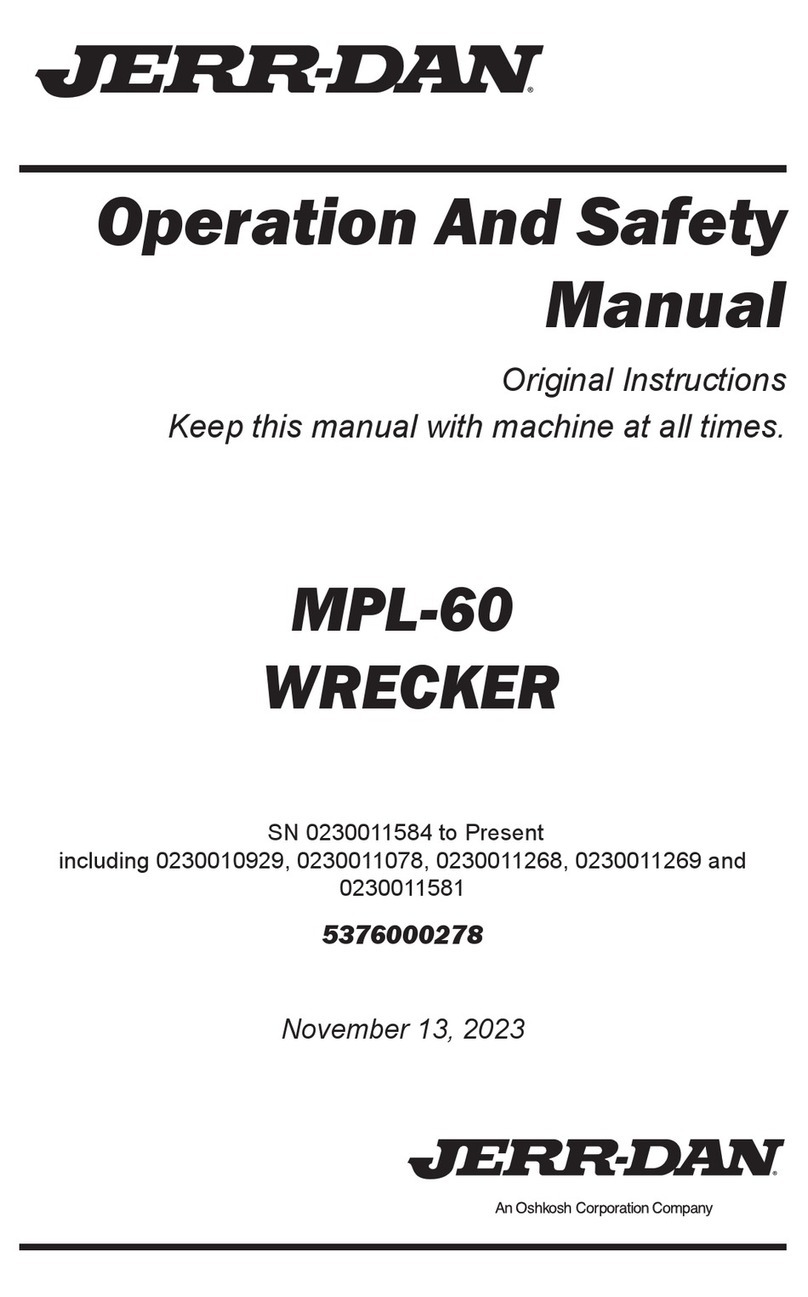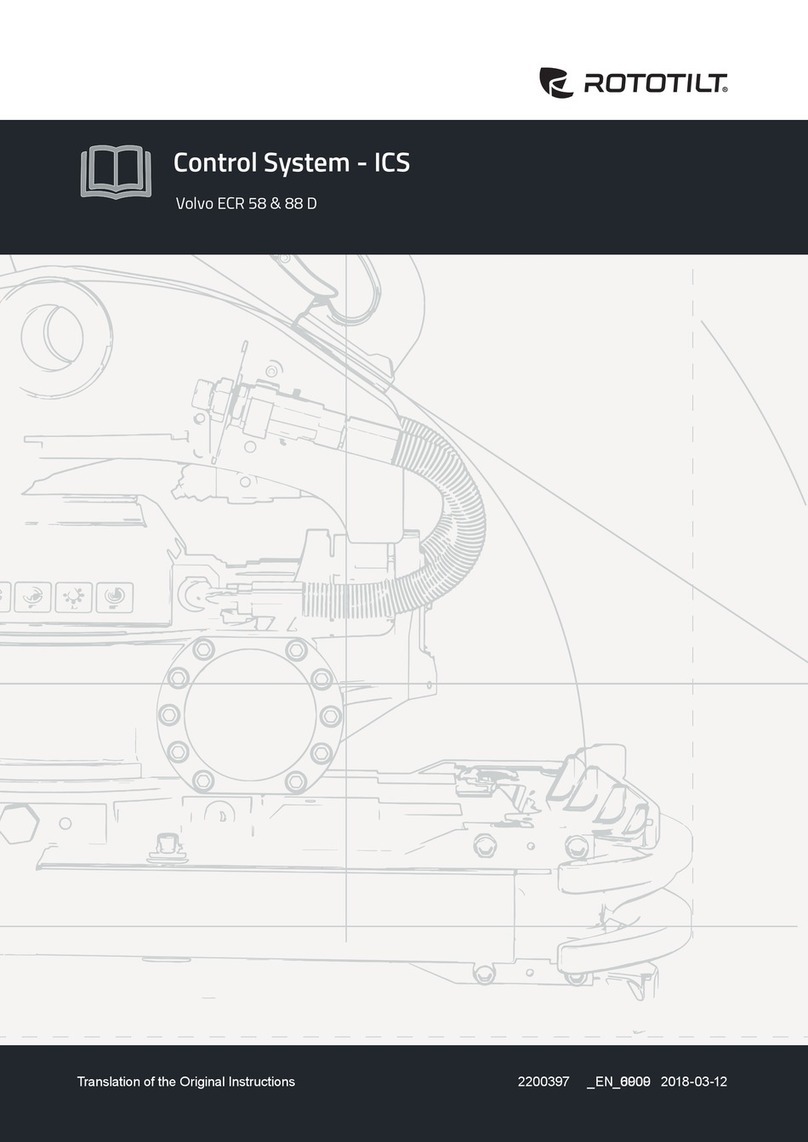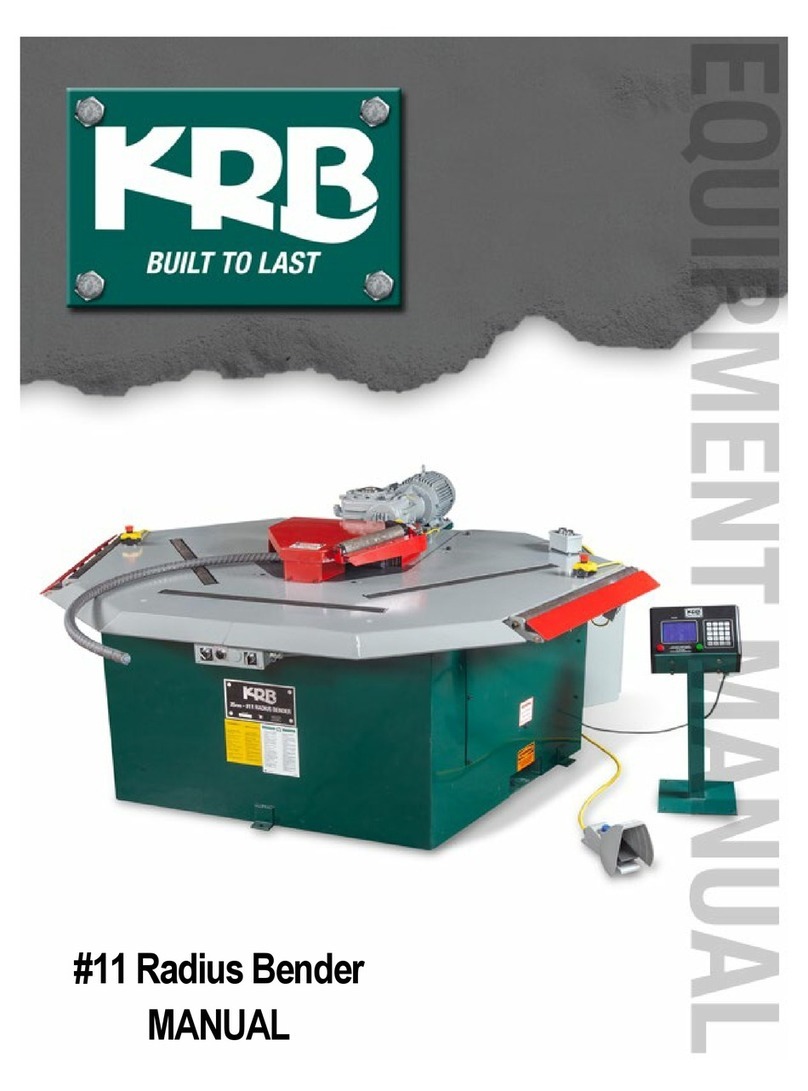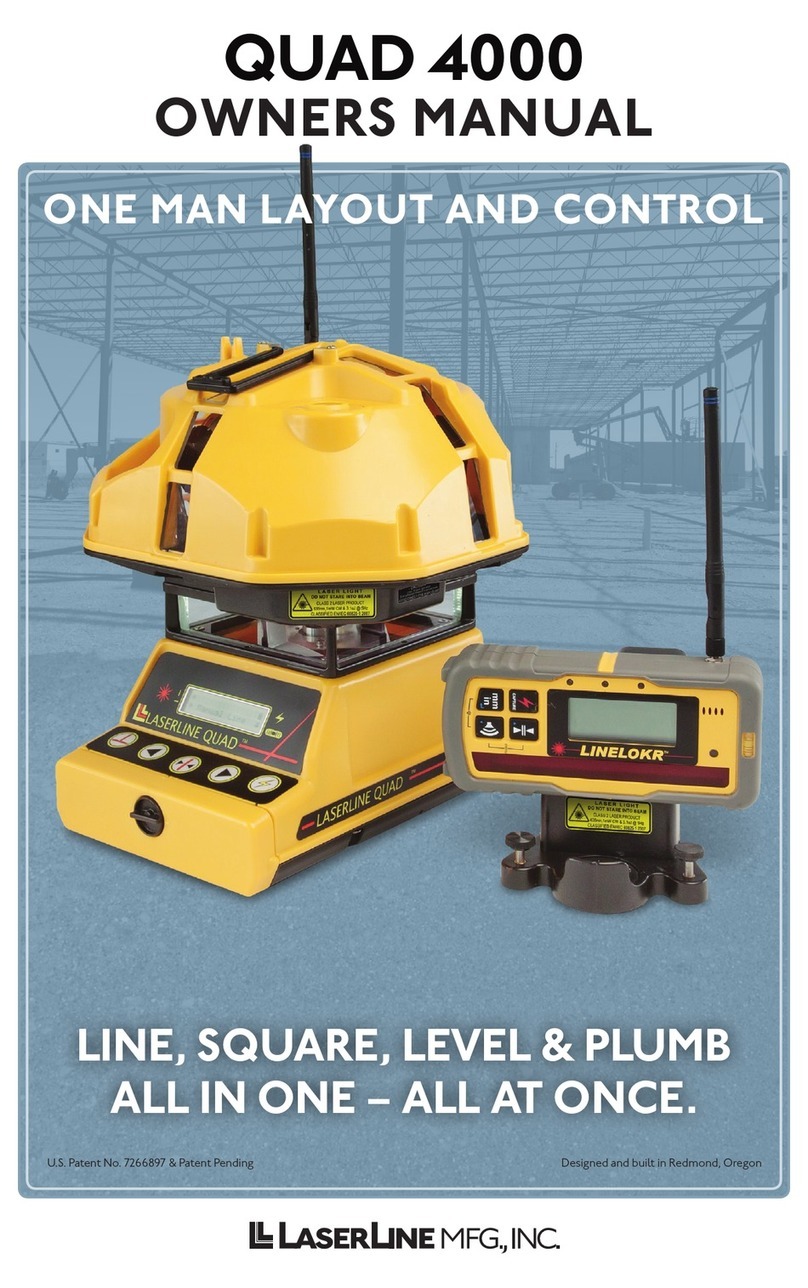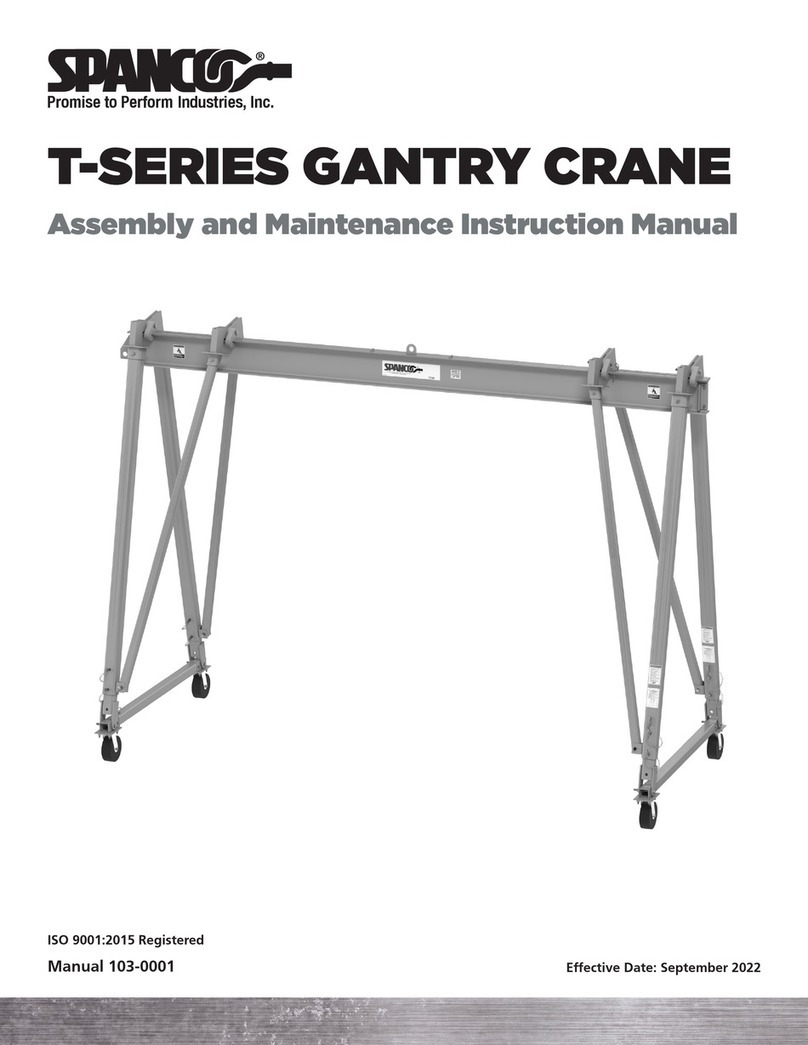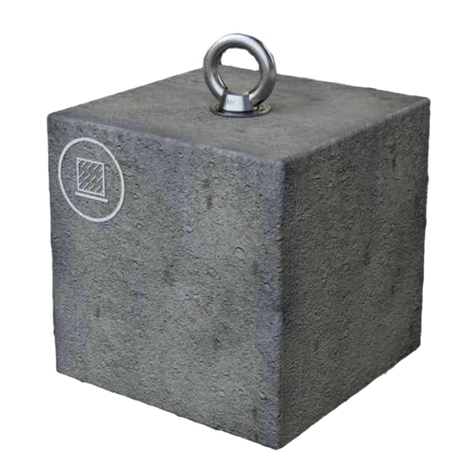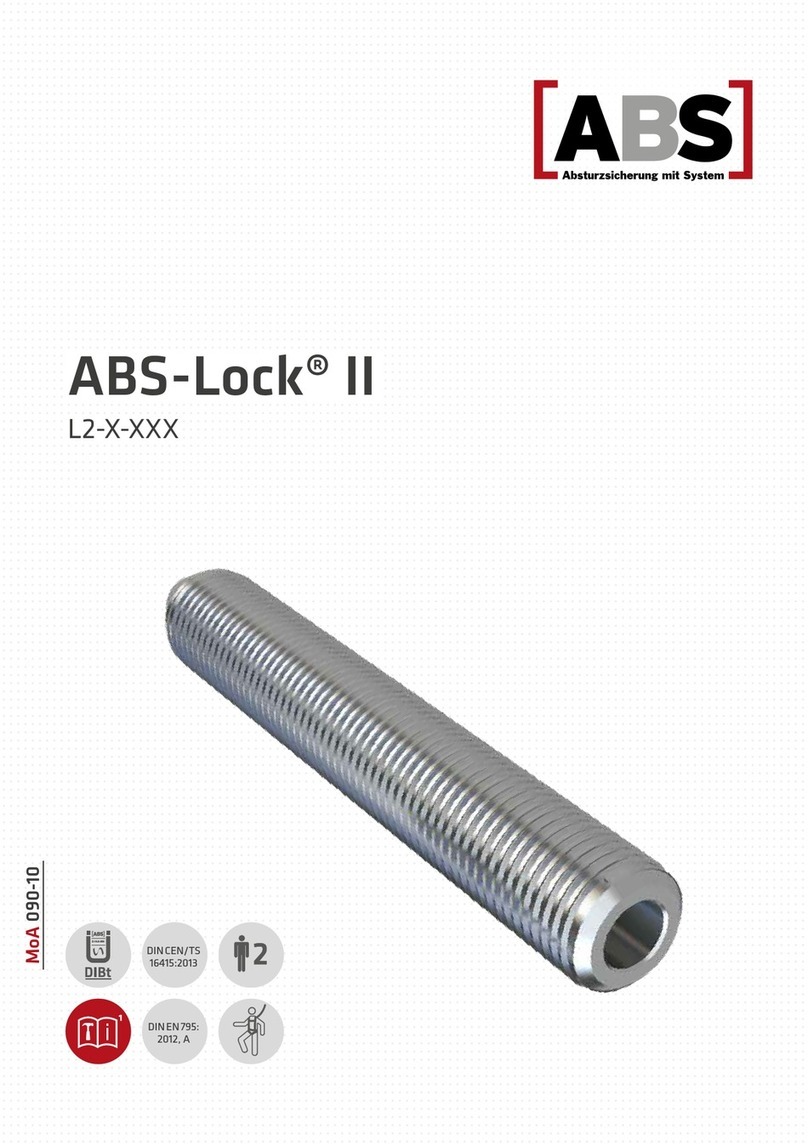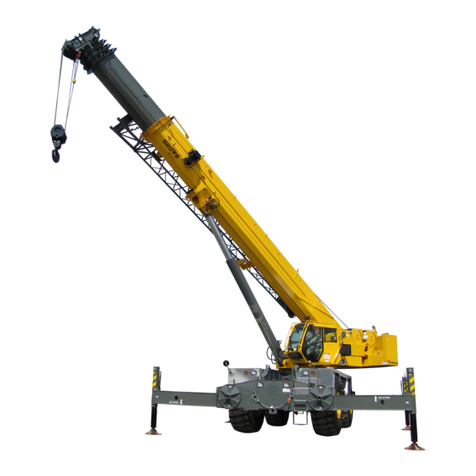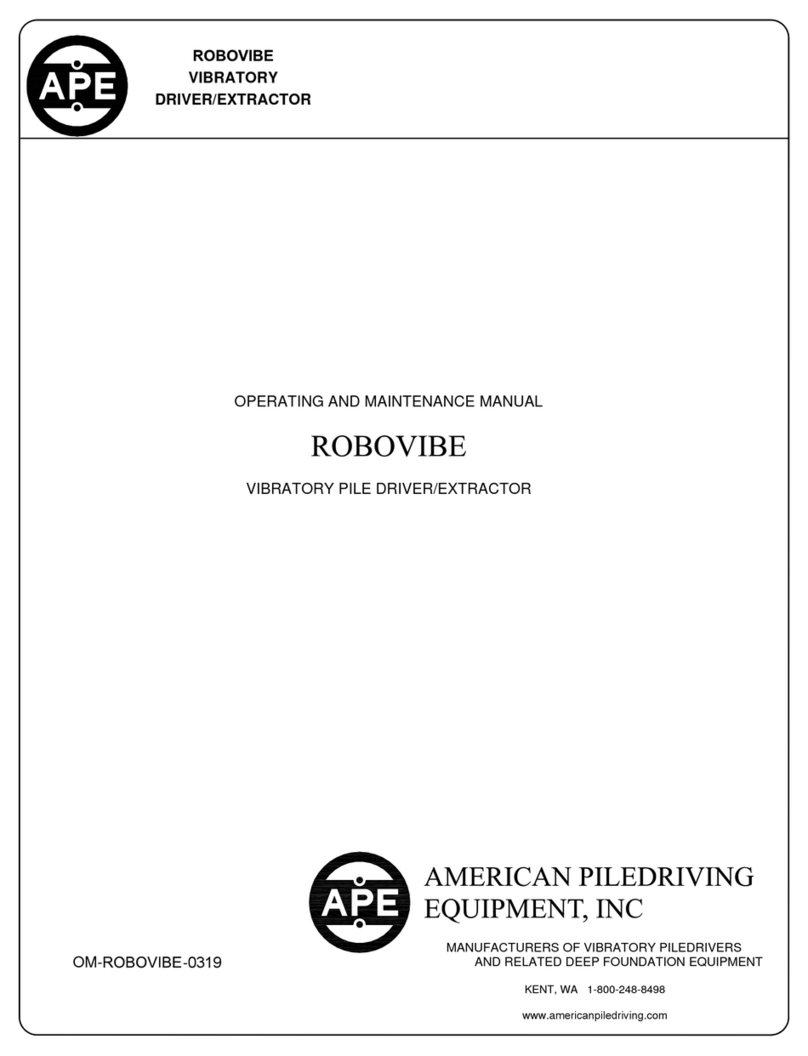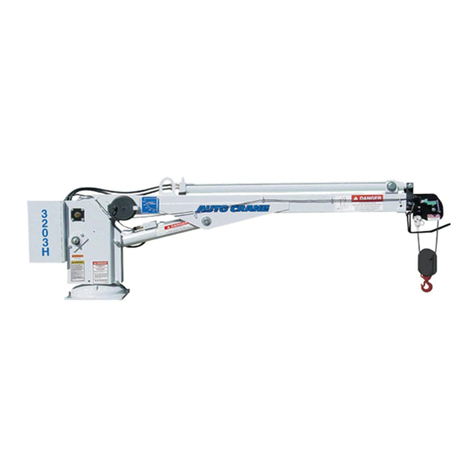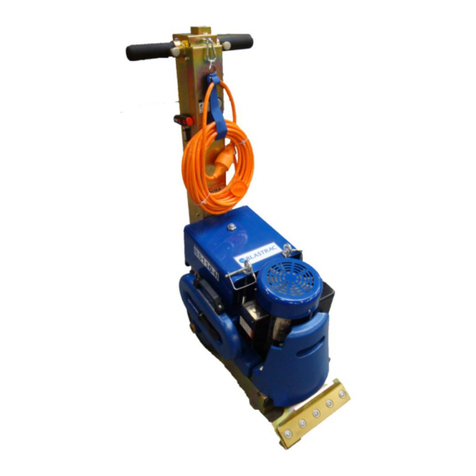Jerr-Dan MPL40 Use and care manual

Operation And Safety
Manual
Original Instructions
Keep this manual with machine at all times.
MPL-40
LIGHT DUTY
WRECKER
5376000277
October 23, 2023
SN 0230011584 to Present
including 0230010532, 0230010924 - 0230010930, 0230011032,
0230011121 - 0230011129, 0230011301 - 0230011319, and
0230011491 - 0230011510

WARNING
Operating, servicing and maintaining this
vehicle or equipment can expose you to
chemicals including engine exhaust, carbon
monoxide, phthalates, and lead, which are
known to the State of California to cause
cancer and birth defects or other
reproductive harm. To minimize exposure,
avoid breathing exhaust, do not idle the
engine except as necessary, service your
vehicle or equipment in a well-ventilated
area and wear gloves or wash your hands
frequently when servicing. For more
information go to www.P65Warnings.ca.gov.

Revision Log
5376000277 a
REVISION LOG
October 23, 2023 - A - Original Issue of Manual.

Read This First
b 5376000277
This manual provides Operational and Safety information for the Light Duty MPL-40
Wrecker. Read this manual and the Operation and Safety Manual provided with
other equipment thoroughly prior to starting operation.
This manual is a very important tool! Keep it with the machine at all times.
The purpose of this manual is to provide owners, users, and operators with the
precautions and operating procedures essential for the safe and proper machine
operation for its intended purpose.
Due to continuous product improvements, Jerr-Dan, LLC (Jerr-Dan) reserves the
right to make specification changes without prior notification. Contact Jerr-Dan for
updated information.
OPERATOR QUALIFICATIONS
The operator of the machine must not operate the machine until this manual has been
read, training is accomplished and operation of the machine has been completed
under the supervision of an experienced and qualified operator.
Operators of this equipment must possess a valid, applicable driver’s license, be
in good physical and mental condition, have normal reflexes and reaction time,
good vision and depth perception and normal hearing. Operator must not be using
medication which could impair abilities nor be under the influence of alcohol or any
other intoxicant during the work shift.
In addition, the operator must read, understand and comply with instructions
contained in the following material furnished with the equipment:
• This Operation & Safety Manual
• All instructional decals and plates
• Any optional equipment instructions furnished
• Commercial vehicle’s Operation & Maintenance Manuals
The operator must also read, understand and comply with all applicable Employer,
Industry and Governmental rules, standards and regulations.
MODIFICATIONS
Any modification to this machine must be approved by Jerr-Dan.

Read This First
5376000277 c
HAZARD CLASSFICATION SYSTEM
SAFETY ALERT SYSTEM AND SAFETY SIGNAL WORDS
This is the Safety Alert Symbol. It is used to alert to the potential personal injury
hazards. Obey all safety messages that follow this symbol to avoid possible injury
or death.
Indicates an imminently hazardous situation. If not avoided, will result in serious
injury or death. This decal will have a red background.
Indicates a potentially hazardous situation. If not avoided, could result in serious
injury or death. This decal will have an orange background.
Indicates a potentially hazardous situation. If not avoided, may result in minor or
moderate injury. It may also alert against unsafe practices. This decal will have a
yellow background.
Indicates information or a comply policy that relates directly or indirectly to the safety
of the personnel or protection of property.

Read This First
d 5376000277
This product must comply with all safety related bulletins. Contact Jerr-Dan or the
local authorized representative for information regarding safety bulletins which may
have been issued for this product.
Jerr-Dan sends safety related bulletins to the owner of record of this machine. Contact
Jerr-Dan to ensure that the current owner of records are updated and accurate.
Jerr-Dan must be notified immediately in all instances where Jerr-Dan product have
been involved in an accident involving bodily injury or death of personnel or when
substantial damage has occurred to personal property on the Jerr-Dan product.
FOR:
• Accident Reporting and Product Safety Publications
• Current Owner Updates
• Questions Regarding Product Applications and Safety
• Standards and Regulations Compliance Information
• Questions Regarding Product Modifications
CONTACT:
Product Safety and Reliability Department
Jerr-Dan
13224 Fountainhead Plaza
Hagerstown, MD 21742
USA
or Your Local Jerr-Dan Office
In USA
Toll Free: 1-877-554-7233
Outside USA
Phone: 240-420-2661
Fax: 301-745-3713
E-mail

Read This First
5376000277 e
REPORTING SAFETY DEFECTS
If you believe that your vehicle has a defect which could cause a crash
or could cause injury or death, you should immediately inform the National
Highway Traffic Safety Administration (NHTSA) in addition to notifying Jerr-
Dan.
If NHTSA receives similar complaints, it opens an investigation, and if it finds
that a safety defect exists in a group of vehicles, it may order a recall and
remedy campaign. However, NHTSA cannot become involved in individual
problems between you, your dealer, or Jerr-Dan.
To contact NHTSA, you may call the Vehicle Safety Hotline toll-free at 1-888-
327-4236 (TTY: 1-800-424-9153); go to https://www.nhtsa.gov/about-nhtsa/
contact-us; or write to:
Administrator
NHTSA
1200 New Jersey Avenue SE.
West Building
Washington, DC 20590
You can also obtain other information about motor vehicle safety from
https://www.nhtsa.gov/campaign/safercargov?redirect-safercar-sitewide.

Read This First
f 5376000277
THIS PAGE IS INTENTIONALLY LEFT BLANK

Table of Contents
5376000277 i
TABLE OF CONTENTS
Revision Log
Read This First
Operator Qualifications b
Modifications b
Hazard Classfication System c
Safety Alert System and Safety Signal Words c
Reporting Safety Defects e
Table of Contents
Section 1 - General Safety Practices
1.1 General 1-1
1.2 Pre-Operation 1-2
Operator Training and Knowledge 1-2
Electrical Hazards 1-2
Crush and Collision Hazards 1-4
Winch Cable / Falling Load Hazards 1-5
Uncontrolled Towed Load Hazards 1-6
Tip-Over Hazards 1-7
Fall Hazards 1-7
Chemical Hazards 1-8
Battery Hazards 1-9
Personal Protective Equipment 1-9
Weather Conditions 1-10
Vehicle Equipment Damage 1-10
Section 2 - Pre-Operation And Inspection
2.1 Pre-Operation Check and Inspection 2-1
2.2 Decals 2-2
2.3 Walk-Around Inspection 2-4
2.4 Operational Checks 2-8
Operational Check 2-8
Section 3 - Controls & Indicators
3.1 General 3-1
3.2 In-Body Controls 3-2
3.4 10 Function Wired Hand Controller (If Equipped) 3-4
3.5 8 Function Wireless Hand Controller (If Equipped) 3-5
3.6 14 Function Wireless Hand Controller (If Equipped) 3-6
Section 4 - Operation
4.1 Underlift Operation - Hydraulic Grids 4-2
4.2 Tie-down Straps - Hydraulic Grids 4-7
4.3 Underlift Operation - Manual Grids 4-11
4.4 Tie-Down Straps - Manual Grid 4-17
4.5 Towball Hitch Attachment 4-19
4.6 Motorcycle Towing Adapter Operation (Optional) 4-21
4.7 Gooseneck Towball Towing Adapter Operation (Optional) 4-27

Table of Contents
ii 5376000277
4.8 Gooseneck Fifth Wheel Towing Adapter Operation (Optional) 4-28
4.9 Wrecker Boom Operation - Dual Line Boom 4-29
4.10 Grid Mounted Recovery Sheave Operation (Optional) 4-33
4.11 Tow Sling Operation (Optional) 4-36
4.12 Spade Foot Attachment (Optional) 4-43
Section 5 - Emergency Procedures
5.1 Lowering of the Wrecker Boom 5-1
5.2 Raising/Lowering/Retracting/Folding/Tilting the Underlift Boom...........5-2
Section 6 - Maintenance
6.1 Introduction 6-1
6.2 Maintenance And Lubrication 6-2
6.3 Oils And Greases 6-3
6.4 Wire Rope Handling And Inspection 6-5
6.5 Wire Rope Installation 6-7
6.6 Underlift Level Stop 6-10
6.7 Lubrication Charts 6-11
Lubrication Points 6-13
6.8 Trouble Shooting 6-15
Hydraulic System 6-15
P.T.O. Functioning Improperly 6-16
Hydraulic Pump 6-16
Hydraulic Pump 6-17
Winch Functioning Improperly 6-17
Remote Hand Controller 6-18
Section 7 - Specifications
7.1 Product Specifications 7-1
MPL-40 7-1
Truck Chassis 7-3
7.2 Capacities 7-4
Inspection, Maintenance and Repair Log
Transfer Of Ownership

Section 1 - General Safety Practices
5376000277 1-1
SECTION 1 - GENERAL SAFETY PRACTICES
1.1 GENERAL
This section outlines the necessary precautions for proper and safe machine
operation and maintenance. For proper machine use, it is mandatory that a daily
routine is established based on the content of this manual. A maintenance program,
using the information provided in this manual must also be established by a qualified
person and followed to ensure the machine is safe to operate.
The owner/user/operator of the machine must not operate the machine until this
manual has been read, training is accomplished, and operation of the machine has
been completed under the supervision of an experienced and qualified operator.
There may be times your truck may be exposed to direct contact with the public such
as parades, charitable fundraisers, etc. Before allowing anyone other than a trained
and experienced employee of your company near your truck, you should consult with
your company safety officer and plan for safety.
If there are any questions with regard to safety, training, inspection, maintenance,
application, and operation, please contact Jerr-Dan.
Failure to comply with the safety precautions listed in this manual could result in
machine damage, property damage, personal injury or death.
WARNING

Section 1 - General Safety Practices
1-2 5376000277
1.2 PRE-OPERATION
OPERATOR TRAINING AND KNOWLEDGE
• Read and understand this manual before operating the machine.
• Do not operate this machine until complete training is performed by authorized
persons.
• Only authorized and qualified personnel can operate the machine.
• Read, understand, and obey all DANGERS, WARNINGS, CAUTIONS, and
operating instructions on the machine and in the manual.
• Use the machine in a manner which is within the scope of its intended application
set by Jerr-Dan.
• All operating personnel must be familiar with the emergency operation of the
machine as specified in this manual.
• Read, understand, and obey all applicable employer, local, and government
regulations as they pertain to the operation of the machine.
ELECTRICAL HAZARDS
• This machine is not insulated and does not provide protection from contact or
being near electrical current. This includes lightning and lightning strikes.
• NEVER operate the machine in an area where overhead power lines, overhead
or underground cables, or other power sources may exist without ensuring the
appropriate power utility company de-energizes the lines.

Section 1 - General Safety Practices
5376000277 1-3
• Always check for power lines before raising the boom.
• Look up and use light to search for power lines in the dark.
• Allow for machine movement and electrical line swaying.
• Do not step offor touch a charged vehicle.
• Maintain a clearance of at least 10 ft. (3m) between any part of the machine from
any electrical line or apparatus carrying up to 50,000 volts. Refer to the Minimum
Approach Distance (MAD) chart. One foot additional clearance is required for
every additional 30,000 volts or less.
Minimum Approach Distance (M.A.D.)
Voltage Range
(Phases to Phase)
MINIMUM APPROACH DISTANCE
in Feet (Meters)
0 to 50KV 10 (3)
Over 50KV to 200KV 15 (5)
Over 200KV to 350KV 20 (6)
Over 350KV to 500KV 25 (8)
Over 500KV to 750KV 35 (11)
Over 750KV to 1000KV 45 (14)
NOTE: This requirement shall apply except where employer, local
or government regulations are more stringent.
• The minimum approach distance may be reduced if insulating barriers are
installed to prevent contact, and the barriers are rated for the voltage of the line
being guarded. These barriers shall not be part of (or attached to) the truck. The
minimum approach distance shall be reduced to a distance within the designed
working dimensions of the insulating barrier. This determination shall be made
by a qualified person in accordance with the employer, local, or governmental
requirements for work practices near energized equipment.
DO NOT MANEUVER TRUCK OR PERSONNEL INSIDE PROHIBITED ZONE
(MAD). ASSUME ALL ELECTRICAL PARTS AND WIRING ARE ENERGIZED
UNLESS KNOWN OTHERWISE.
DANGER

Section 1 - General Safety Practices
1-4 5376000277
CRUSH AND COLLISION HAZARDS
• Keep clear of all spades.
• Always use jack stands to support the boom and/or underlift before working
underneath a lifted load.
• Warn personnel not to work, stand, or walk under a raised boom or underlift.
Position barricades if necessary.
• Lower boom to stowed position prior to driving machine.
• Be aware of height clearances when traveling.
• Look out for and avoid other personnel, machinery, vehicles and obstructions in
the area when driving the truck. Use a spotter if you DO NOT have a clear view.
When opening body compartments:
• Loose items may shift during transport, ensure to properly secure items when
not in use
• Ensure all compartment doors are properly closed prior to transport.

Section 1 - General Safety Practices
5376000277 1-5
WINCH CABLE / FALLING LOAD HAZARDS
• Keep people away during operation.
• Never exceed capacity of rigging or cable.
• Never stand on or straddle cable.
• Always keep a minimum of five (5) wraps of cable on winch drum.
• Keep tension on cable when unwinding.
• Always stop operation before block contacts sheave.
• If block contacts sheave, lower load by letting out cable and inspect for damage.
• Keep cables from contacting sharp objects.
• Never wrap cables around objects. Use appropriate chains/straps to wrap around
the vehicle to be recovered, and attach the cable hook to the chain/straps.
• Never allow the cable to cross over itself when wrapping on the drum.
• All boom placement functions should be made with the winch wire ropes set in
“free spool” to avoid over tensioning or breaking the winch wire ropes.
• Never use damaged cable. Never use cable menders. Replace damaged cable.
Use cable and hooks with equal or greater rating.

Section 1 - General Safety Practices
1-6 5376000277
• Keep hands away from cable and drum during operation.
• Never operate recovery equipment with people under load.
• Jog winch clutch before pulling. Keep winch clutch engaged while the cable is
loaded.
• Approved head gear must be worn during recovery operations.
UNCONTROLLED TOWED LOAD HAZARDS
• DO NOT exceed GAWR’s or GCWR of the chassis.
• Set parking brake and chock wheels of the recovery vehicle when connecting
casualty vehicle.
• Use two (2) safety chains and two (2) tie-down chains or straps.
• Release parking brake of casualty vehicle prior to moving.
• Check chain tension periodically while in transit.
• Always retract underlift as close as possible. Leave enough room to maneuver
around corners without corner binding or causing contact between the two (2)
vehicles.
• Ensure safety chains are properly attached from recovery vehicle to casualty
vehicle.
• Attach auxiliary D.O.T. towing lights to the casualty vehicle.

Section 1 - General Safety Practices
5376000277 1-7
• When towing a vehicle from the front or rear, ensure vehicle steering wheel is
properly locked.
• Tow casualty vehicle on undamaged wheels/tires only.
• Retighten the tie-down straps during a tow as the tires settle into the grid from
towing.
TIP-OVER HAZARDS
• Set up on firm surface only.
• Deploy rear spades onto proper firm surface.
• Ensure truck is level prior to any boom operations.
FALL HAZARDS
• Never use wrecker boom to hoist personnel.
• Never ride on boom, hook, load or any other device attached to wrecker boom
or load line.
• DO NOT carry riders outside the cab. Riders could fall offthe machine.
• Do not climb on the truck to access elevated service points. Only use approved
ladders or grab handles and steps provided on the rear of the unit when accessing
the service points on the top of the truck body in a controlled service environment.
Always maintain 3-point contact, using two hands and one foot or two feet and
one hand, when mounting or dismounting. These surfaces can become slippery,
ensure to keep them and footwear clean and free of debris.

Section 1 - General Safety Practices
1-8 5376000277
CHEMICAL HAZARDS
Exhaust Fumes
• DO NOT operate machine in an enclosed area without proper ventilation.
• DO NOT operate the machine in hazardous environments unless approved for
that purpose by Jerr-Dan and site owner. Sparks from the electrical system and
the engine exhaust can cause an explosion.
Flammable Fuel
• DO NOT fill the fuel tank or service the fuel system near an open flame, sparks
or smoking materials. Engine fuel is flammable and can cause a fire and/or
explosion.
Hydraulic Fluid
• DO NOT attempt to repair or tighten any hydraulic hoses or fittings while the
engine is running or when the hydraulic system is under pressure.
• Stop engine and relieve trapped pressure. Fluid in the hydraulic system is under
pressure and can penetrate the skin.
• DO NOT use your hand to check for leaks. Use a piece of cardboard or paper to
search for leaks. Wear gloves to protect hands from spraying fluid.

Section 1 - General Safety Practices
5376000277 1-9
BATTERY HAZARDS
• Battery fluid is highly corrosive. Avoid contact with skin and clothing at all times.
• Keep sparks, flames, and lighted materials away from batteries.
• Charge batteries only in a well ventilated area.
• Wear proper eye protection when servicing battery.
PERSONAL PROTECTIVE EQUIPMENT
• Use personal protective equipment when working on or around this vehicle.
• Remove rings, watches, jewellery, neckwear or other items that can catch in
equipment.
• Wear :
o Snug fitting and sturdy long-sleeve shirt and long pants. Avoid loose fitting
clothes.
o Sturdy gloves.
o Approved eye protection.
o Steel toed boots.
o Approved head gear.
o Approved hearing protection.

Section 1 - General Safety Practices
1-10 5376000277
WEATHER CONDITIONS
• Be aware of the wind conditions. Wind may cause load to swing or shifting of
load.
• If using in freezing conditions, you must be alert to possibility of ice forming on
the device. Use Caution when extending and retracting winch cables, boom, and
underlift. In addition use caution when opening/closing body panels
• Hydraulic cylinders are subject to thermal expansion and contraction. This may
result in changes to the boom and/or attachment position while the machine is
stationary. Factors affecting thermal movement can include the length of time
the machine is stationary, hydraulic oil temperature, ambient air temperature and
boom and/or attachment.
VEHICLE EQUIPMENT DAMAGE
The act of lifting and towing casualty vehicles that have often been involved in a
crash offers many opportunities to inflict worse damage on the towed vehicle, or
even damage to the recovery vehicle. Recovery operators should take great care
to avoid this damage. Follow these guidelines to reduce the potential for equipment
damage.
• Ensure vehicle is positioned in an area free from overhead obstructions. Keep a
safe working distance from overhead power lines, bridges, road signs and other
objects.
• Avoid retracting or extending the wrecker boom while under load.
• Do not tow a vehicle on its drive wheels unless steps have been taken to protect
its transmission and differential. Follow the recommendations of the vehicle
manufacturer or use a towing dolly.
• Never attach the chain hooks in such a way as to damage brake lines or other
functional parts.
• Ensure proper ground clearance of the underlift boom when traveling. Keep the
underlift boom raised high enough offthe ground when roading to avoid dragging
it over road surfaces.
• Do not move the recovery vehicle while rear spades are extended.
• Spades may damage paved surfaces.
Other manuals for MPL40
1
Table of contents
Other Jerr-Dan Construction Equipment manuals
Popular Construction Equipment manuals by other brands
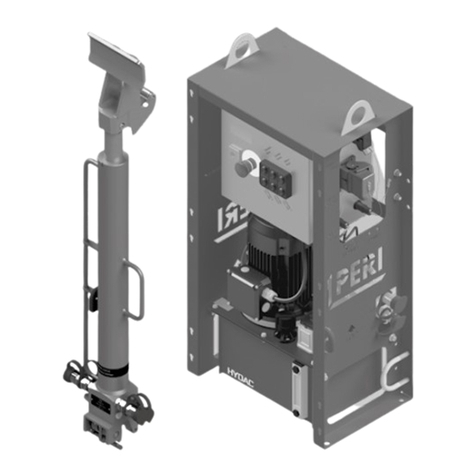
Peri
Peri RCS-2 Assembly, Commissioning and Maintenance Spare Parts and Circuit Diagrams

Husqvarna
Husqvarna 1-10DPS75 Operator's manual
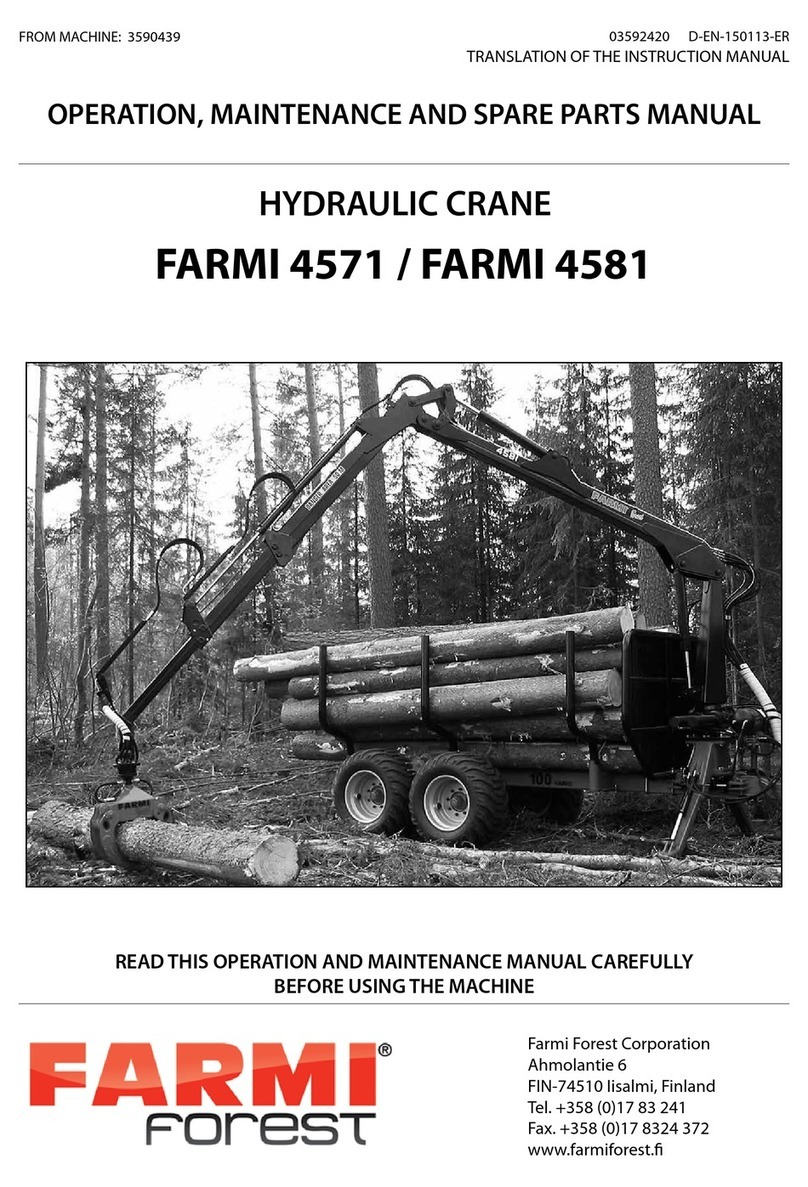
Farmi Forest
Farmi Forest FARMI 4571 OPERATION, MAINTENANCE AND SPARE PARTS MANUAL
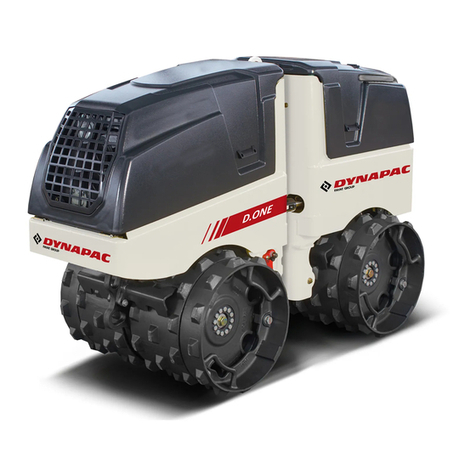
Dynapac
Dynapac D.ONE operating instructions
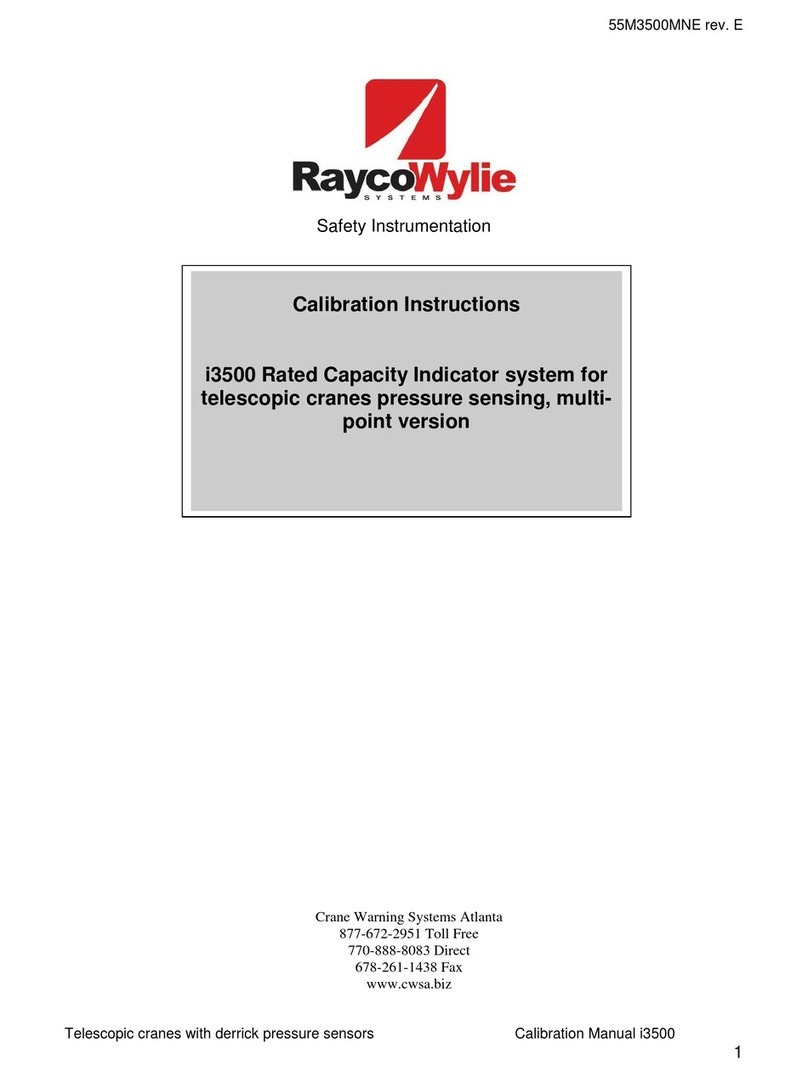
RaycoWylie
RaycoWylie i3500 Calibration instructions

imcoinsa
imcoinsa 2J20 Instruction book
